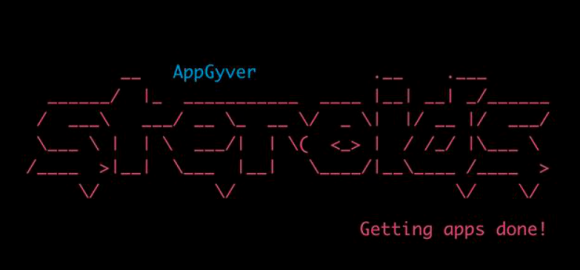 HTML5 app development is getting beefed up. Helsinki and San Francisco-based AppGyver has just released Steroids to allow anyone with a knowledge of HTML5 and Javascript to create apps with real native features, like camera, notifications, and so on. A few startups with Helsinki roots have been using the platform in beta, including Flowdock, Meeting.gs, and Betterdoctor. Using the apps you’d be surprised they’re not native.
HTML5 app development is getting beefed up. Helsinki and San Francisco-based AppGyver has just released Steroids to allow anyone with a knowledge of HTML5 and Javascript to create apps with real native features, like camera, notifications, and so on. A few startups with Helsinki roots have been using the platform in beta, including Flowdock, Meeting.gs, and Betterdoctor. Using the apps you’d be surprised they’re not native.
Where AppGyver excels is in its simplicity. As soon as you open up the Steroids terminal you can create a new project in two lines, and then put your project together right in the terminal. As soon as you start the project you tie it to your phone, which is a dead simple process. Using the AppGyver app you take a quick picture of the QR code on your screen to link up the project to your phone. Changes you make to the code are then updated in real-time, speeding up the development process by making your changes immediately testable.
This QR code method of deploying is also useful for projects where you want to show off your development to customers halfway around the globe. All they need is a QR code and link, and the app is on their phones – without the complexity of other test platforms.
The major player in this HTML5 app development space is PhoneGap, which started out as open source and was purchased by Adobe in 2011. AppGyver originally built Steroids from scratch, but then decided last summer to integrate PhoneGap into AppGyver’s core. Now web developers that have gotten used to PhoneGap development can open their projects in the AppGyver platform and take advantage of AppGyver’s features to speed up the work flow and quicker native features.
“We’re not a PhoneGap competitor, but a continuum. We provide a path to extend your experience and tooling from what you already know. We like the people in the PhoneGap community. Technically want them to pay us instead of Adobe, but we still think we are a part of the phone gap community,” explains Marko Lehtimaki, CEO of AppGyver.
With the launch, they have also released an ‘Academy’ where developers new to app development can learn how to take advantage of a phone’s features.
Last year the company closed a $1 million funding round, and is apparently hoping to close another round soon. In the future, AppGyver is hiring more people to increase their team from eight to somewhere around sixteen, including positions in online marketing, enterprise sales, community building, support, and R&D.
“Some say that hybrid apps are not as good as native, so we are contributing to that area,” says Lehtimaki. “But pretty much what we have released right now is making the whole PhoneGap and HTML5 development fun and easy.”




